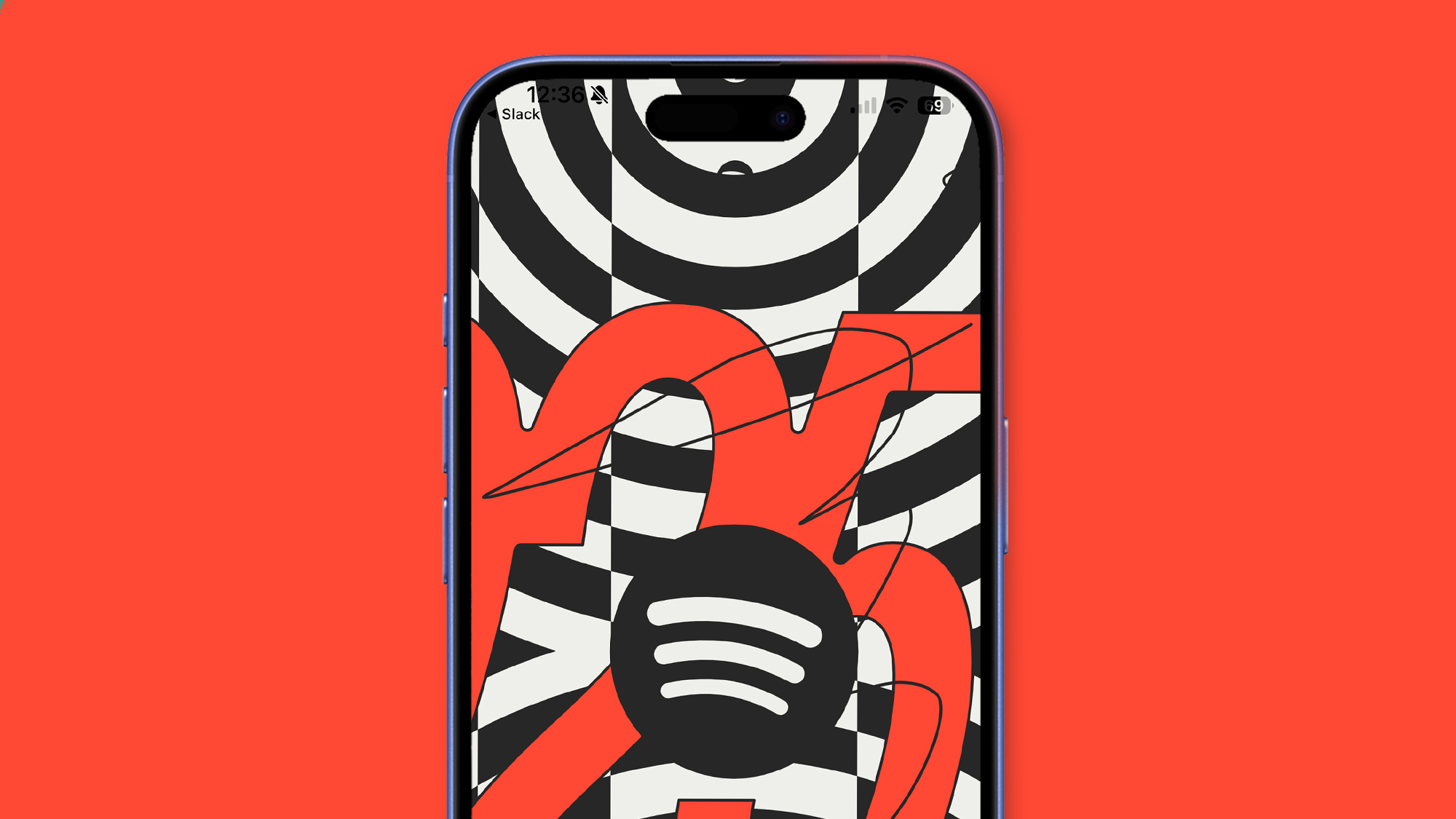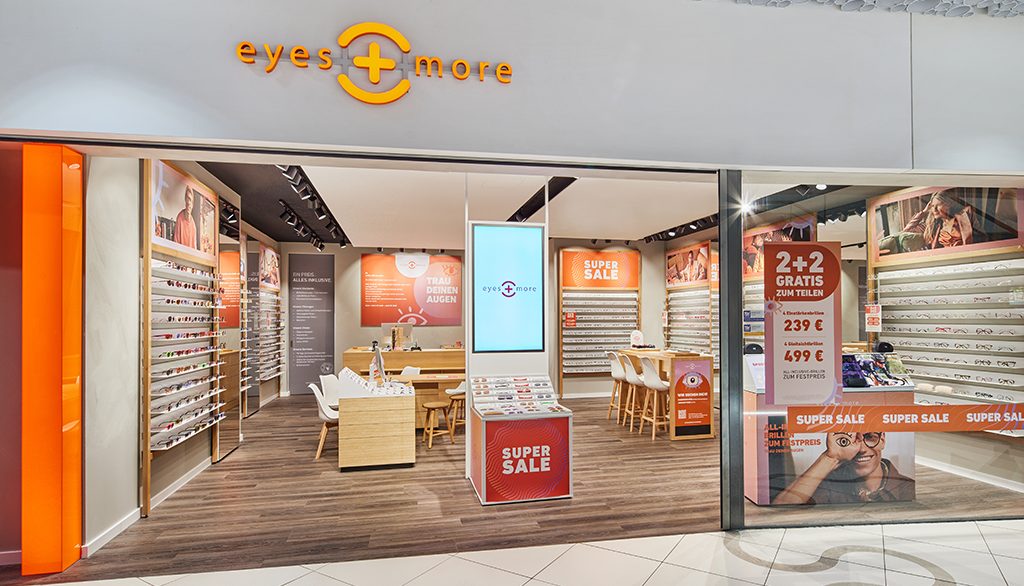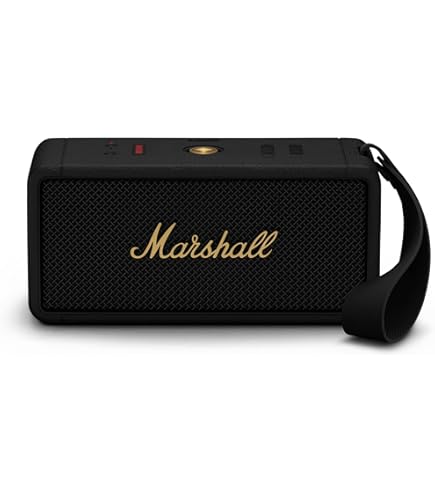In July, Marshall unveiled the second generation of its Middleton portable speaker. This iteration enhances the beloved first model launched a few years earlier, boasting longer listening time, superior sound, and cutting-edge Bluetooth technologies. Even though this speaker premiered in the summer, it remains a fantastic choice for any season, even when temperatures drop.
Like most of the brand’s speakers, the Marshall Middleton 2 features the signature design, providing over 30 hours of battery life. In contrast to the Kilburn 3, which incorporates some trendy features for an added touch, this model streamlines the listening experience while emphasizing Marshall’s strengths: exceptional audio quality, stylish design, and excellent battery longevity. Our review will cover everything you should know about Marshall Middleton 2, including the target audience and its potential suitability for your daily listening needs.
Marshall has made slight design adjustments from the original Middleton speaker for this successor. Immediately noticeable are the rugged buttons on the top that offer a straightforward interaction. These buttons enable users to power the speaker on, connect via Bluetooth, manage music playback with the main gold button, or adjust bass and treble.
Though it’s uncertain how much Marshall fine-tuned the bass and treble without the company’s app, users can at least modify the sound on-the-go. Additionally, the Marshall Middleton 2 retains a visual similarity to its predecessor, continuing the rugged aesthetic with the iconic gold Marshall logo prominently featured on the front grill. The inclusion of a leather strap also allows for convenient portability.
Nonetheless, I observed when I lifted the speaker by its edges that the tough outer layer can easily be detached. While I presume this aids in repairability, it adversely affects the premium appearance of the product, as I didn’t encounter the same issue with other models.
Marshall claims that the Middleton 2 produces deeper bass and enhances performance at maximum volume compared to its predecessor. Mirroring the company’s latest models, this speaker is equipped with 360 True Stereophonic sound, designed to envelop listeners with their favorite music. I strongly recommend utilizing Marshall’s signature sound, though it’s also feasible to create a personal EQ or simply adjust bass and treble from the speaker based on your mood or musical choice.
I tested the speaker with a variety of music, from classic Beatles tracks to Blossoms, Sigrid, Italian pop, jazz, pure rock, and MPB (popular Brazilian music), and I was never disappointed. In previous speaker reviews, I’ve typically suggested acquiring a second unit, like with the HomePod or Beats Pill devices. However, Marshall’s Middleton 2 excels on its own, allowing you to enjoy a track at a lower volume or at full blast, and you’ll consistently experience powerful bass, impressive mids, and sharp highs.
That said, it’s important to remember that Marshall’s app is crucial to the speaker experience, as it’s the initial point for pairing your device, enabling Bluetooth LE, and more. However, unlike the Kilburn 3, Middleton 2 lacks some of the more sophisticated features, such as Placement Compensation for analyzing how sound reverberates within an environment.
Marshall asserts that the Middleton 2 offers more than 30 hours of battery life, claiming that a quick 20-minute charge can “get the show back on the road.” The company is so confident in its battery longevity that Middleton 2 can even function as a power bank for your smartphone, allowing you to enjoy a gathering with friends, charge your phone, and still have enough power to continue playing music after everyone departs.
During my trials, I seldom had to consider battery life. I spend most of my work hours listening to music, I blast Apple Music while showering, and I select a quieter playlist for cooking at night. Even with my listening habits, I discovered that Middleton 2 would last for virtually an entire week on a single charge.
Another appealing aspect of this product is that you don’t need to be overly cautious about listening at lower volumes to preserve battery life. I typically listen to music at around 50% — otherwise, it becomes too loud for my apartment. Furthermore, whenever I need to recharge the speaker, I can easily use the USB-C cable included in the package.
Marshall’s Middleton 2 comes in Black and Brass or Cream for $329.99 on the company’s website. While this speaker offers impressive sound quality, battery life, and Marshall’s signature design, I have some concerns regarding the easily detachable rugged parts. Alternatively, the more premium Kilburn 3 is priced $50 higher, meaning any discount on that model makes it a more attractive upgrade due to its larger battery, more powerful sound,
Read More










